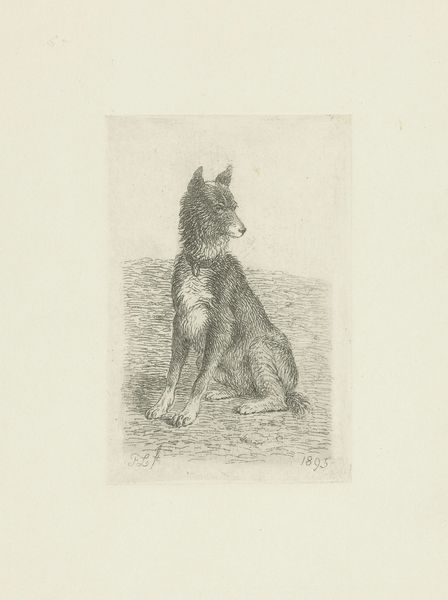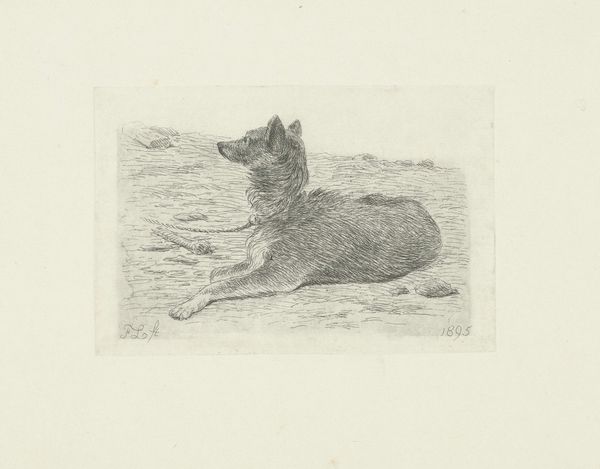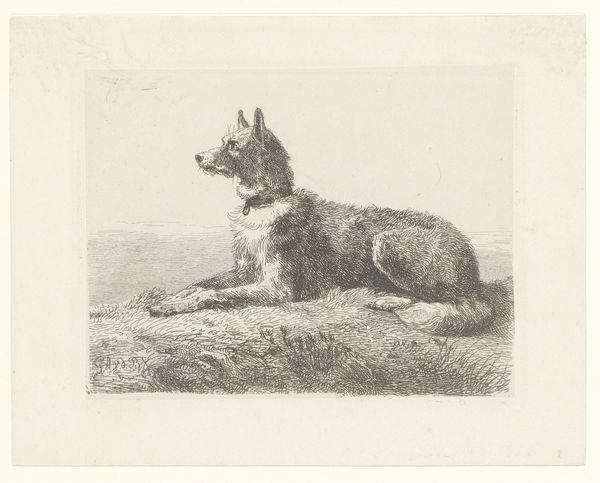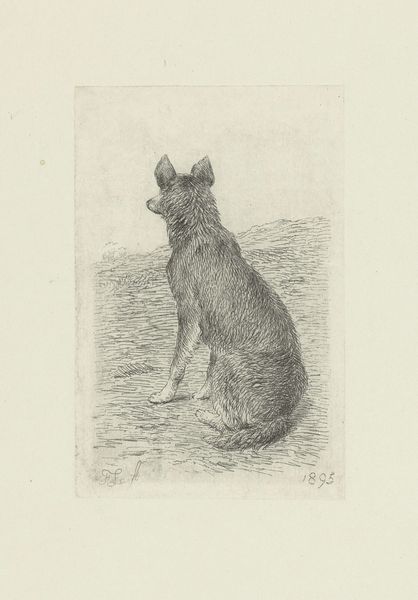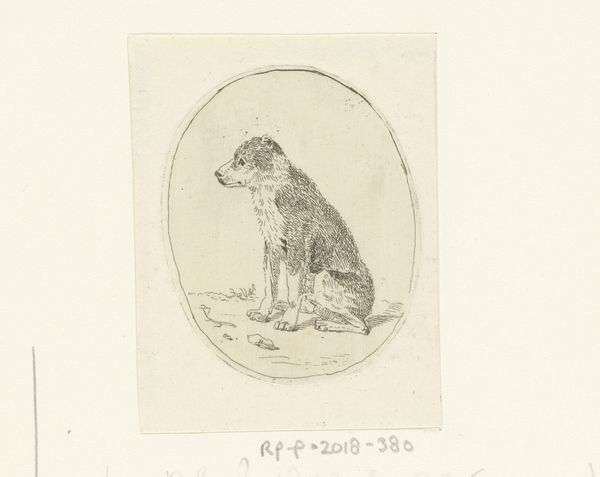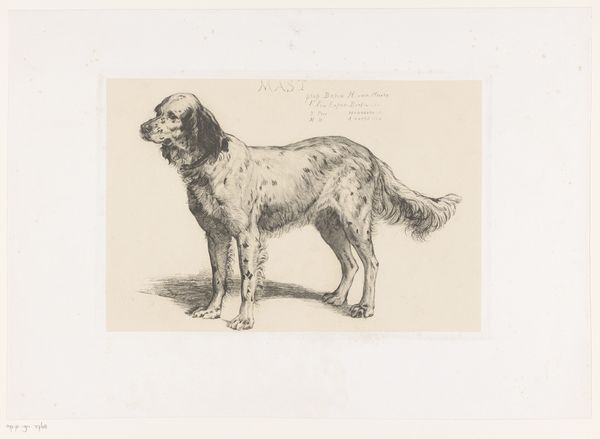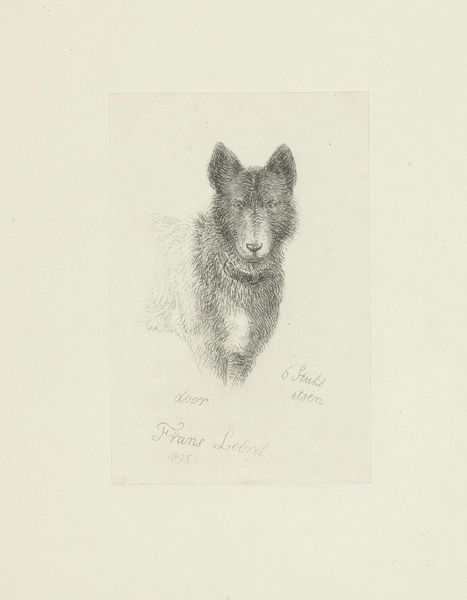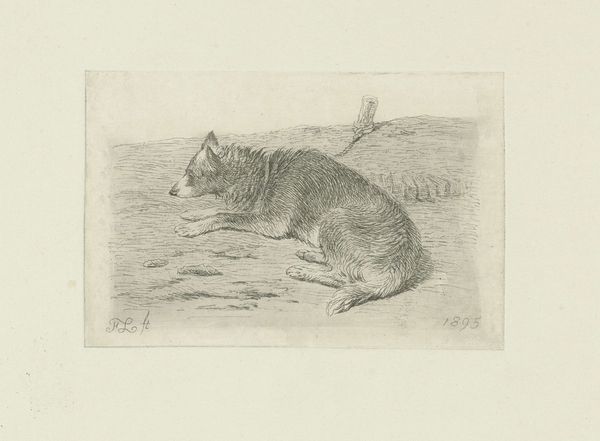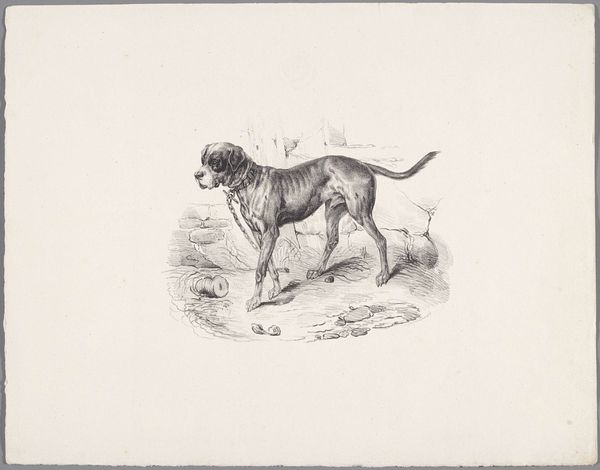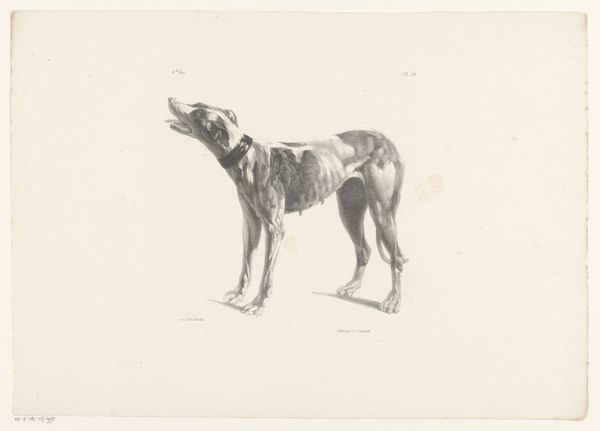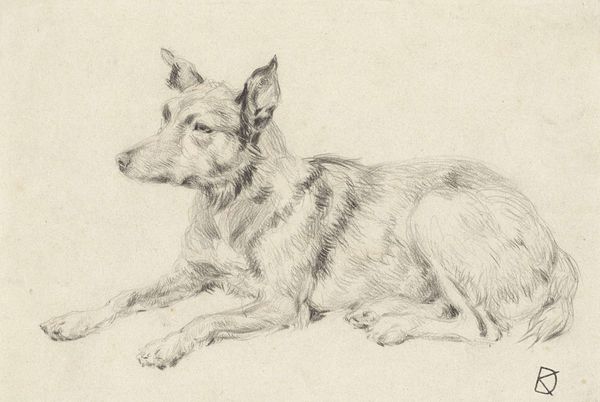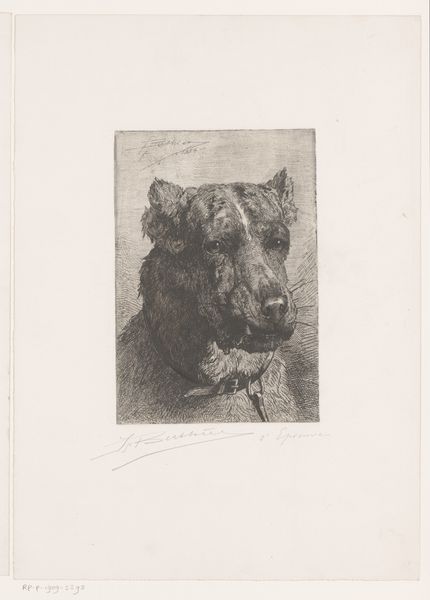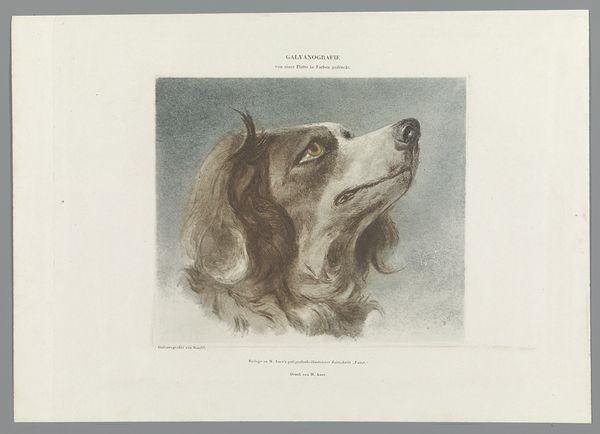
#
pencil drawn
#
amateur sketch
#
light pencil work
#
shading to add clarity
#
pencil sketch
#
dog
#
old engraving style
#
pencil drawing
#
pen-ink sketch
#
sketchbook drawing
#
pencil work
Dimensions: height 120 mm, width 80 mm
Copyright: Rijks Museum: Open Domain
Editor: So, here we have Frans Lebret's "Zittende hond met kop naar rechts," made in 1895, a pencil drawing on paper. It's a simple sketch, almost like a study. What grabs you when you look at it? Curator: What strikes me is the immediacy of the mark-making. Consider the labor involved—the artist's hand, moving the pencil across the paper. This isn't just representation; it's an index of a specific material interaction, the graphite leaving traces on the surface. What kind of paper do you think he used and how accessible was the material? Editor: I imagine the paper was probably relatively inexpensive, maybe even scrap. But what about the way the dog is depicted? Is there anything significant there? Curator: Think about the societal role of dogs in 1895. Were they primarily working animals, companions, or luxury items? This pencil sketch might offer a glimpse into the social status and labor involved in caring for animals in that period. Is it a stray, a worker, or pet? Its living and feeding conditions become concerns, looking at what sort of work would allow an artist such materials to document their own surroundings, what this says of the status of the sitter becomes clearer. Editor: That makes sense. I hadn't thought about how the material conditions influence even the subject matter. Curator: Precisely! The choice of a humble material like pencil connects the work to a broader culture of drawing, sketching and availability and use for common-folk use, opening possibilities. Editor: It’s interesting to consider how something that looks like a simple sketch can actually reveal so much about the artist's world and the materials they had access to. Curator: Indeed, by analyzing the material conditions, the tools, labor and even paper quality, we can extrapolate insight into societal practices that often remain unaddressed by focus of higher subject in art. Editor: That's definitely a perspective I'll be keeping in mind from now on! Thanks.
Comments
No comments
Be the first to comment and join the conversation on the ultimate creative platform.
